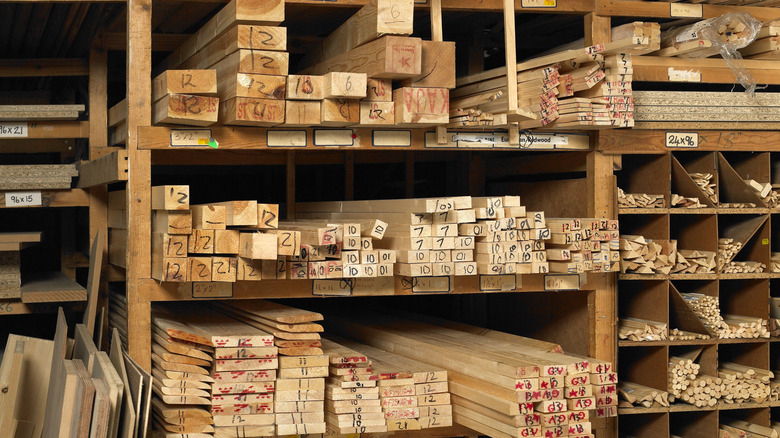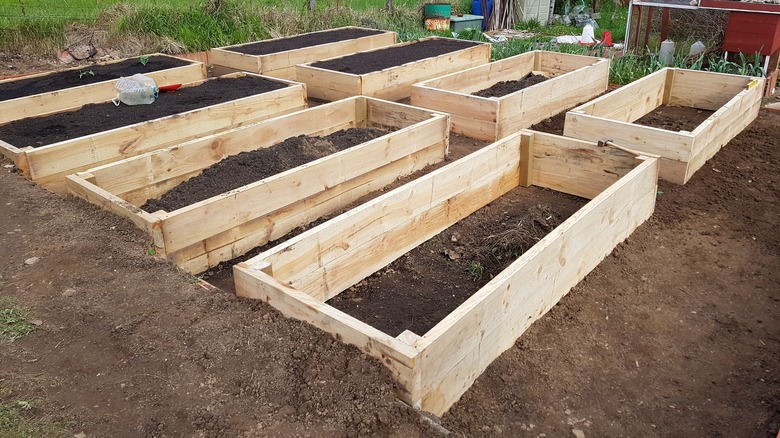When You Should & Shouldn't Use Treated Wood For Your Home Projects
It's hard not to be overwhelmed by the sheer number of options when purchasing lumber. In addition to the various lengths and thicknesses of boards, there's also both treated and untreated wood options. Both pressure-treated and untreated wood can be useful building materials, but it's important to know which is best for what project, as well as what precautions to take with each kind of wood.
Generally speaking, pressure-treated wood is for use in situations where the wood won't be kept dry. Untreated wood tends to only last 8 years or less when exposed to the elements, due to insect and fungal damage. Pressure-treated wood, on the other hand, can easily last three times that long in the same conditions, thanks to the chemicals it is treated with. While these chemicals, which nowadays are usually alkaline copper quaternary (ACQ), copper azole (CA), copper-HDO, or copper naphthenate, help the wood last longer, especially under less than ideal conditions, additional care needs to be taken when using them. There are also concerns about the chemicals leaching out of the wood and eventually causing health or environmental problems. While they are all considered far safer than the arsenic-containing chromated copper arsenate (CCA) which was commonly used to treat wood until 2003, there are still additional safety steps to take when using pressure-treated wood. Additionally, controversy continues over whether it is appropriate to use in raised beds.
Using pressure-treated wood
Because pressure-treated wood is intended for wood exposed to the elements, there's no reason to even consider using it for any indoor projects such as DIYing new furniture to refresh your bedroom. Instead, pressure-treated wood is more appropriate for outdoor projects like building wooden fences. When you use pressure-treated wood, remember to exercise caution, including wearing a mask and goggles, washing the clothes you wore separately from the rest of your laundry, avoiding burning the pressure-treated wood, and sealing the wood before use.
While today's pressure-treated wood is far safer for people and the environment than it used to be, there is still a fair amount of debate over whether pressure-treated wood is appropriate for building a raised bed garden. While raised beds are exposed to the elements and may have relatively short lifespans if they aren't made of pressure-treated wood, many people are understandably uncomfortable building them out of wood that may leach chemicals. One popular option is to build your raised beds out of woods like cedar or hemlock, which tend to be relatively long-lasting and rot-resistant even when untreated.

